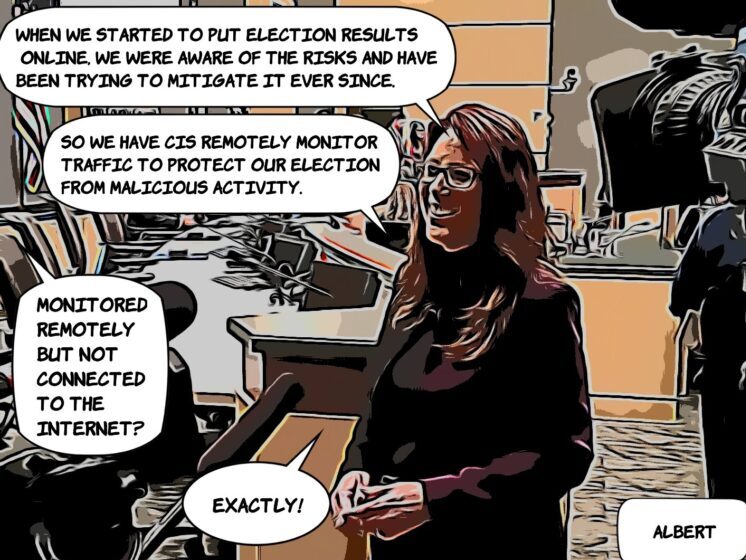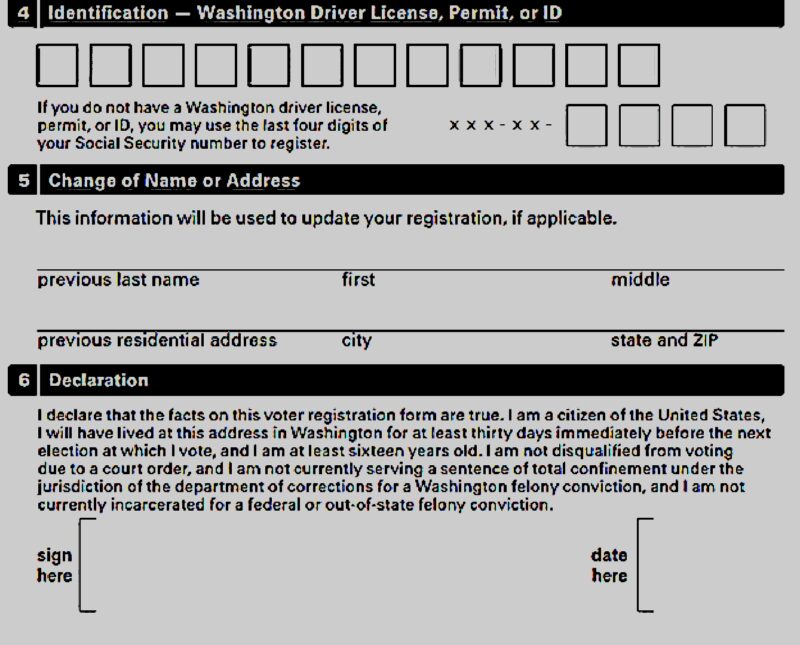The current election system has several drawbacks that restrict transparency to the point that it borders on violating our constitutional right to free and fair elections. (Article 1 section 19) The most obvious solution is to once again return to precinct level same day voting and hand counting of paper ballots with voter ID allowing for warranted levels of transparency. This is in essence how Canada, most of Europe, and many other countries do it today because of the advantages to transparency it brings. Read on to understand what those advantages are.
#1. Black Box Voting
Black box voting is what happens with computerized election systems. Because the vendors of the systems being used are private companies, it necessitates that they protect their intellectual property rights by withholding software source code. This leaves the public and election officials in the dark as to what is actually going on inside the system. Going to hand counting does away with computers totally eliminating this problem.
#2. Voter Rolls
Online electronic voter rolls combined with computerized voting systems leave substantial room for manipulation of data by bad actors which is very difficult, if not impossible, to discern. This is largely due to the difficulty of keeping the rolls clean and up to date coupled with various restrictions to transparency inherent within a computerized system.
With hand counting the ballots are brought to the precinct voting center by the voter along with their ID. This essentially eliminates data manipulation that relies on voter rolls with ghost voters, phantom voters, duplicate voters, and non-citizen voters on the rolls.
#3. Signature Verification
Signature verification is done by staff who, in comparison with the professionally trained, get minimal training, and are under pressure to make evaluations in as little as 5 seconds per signature. This would arguably be difficult for the professionally trained to do.
On top of that, due to recent laws, the return signature envelopes are no longer accessible to the public in order to verify that envelope signatures match those on file, adding another layer of a lack of transparency to the process. Going to hand counting totally eliminates this aspect of the election process.
#4. Mail In Ballots
Mail in ballots have no chain of custody from the time they leave the voters hands at the post office till arriving at the election center. Drop boxes are unmonitored creating even more obscurity. These transparency issues are eliminated by ballots being delivered with ID by the voter to election personnel at a precinct voting center.
#5. Drawn Out Process
The present system requires drawn out elections over two to three weeks. This allows for more opportunity for undetected nefarious activity to occur thus contributing to more problems with transparency for the public. Going to hand counting should allow for one day elections with same day posting of results significantly reducing this problem.
#6. Complexity
The layer upon layer of complexity in the present system is not only a hindrance to gaining public trust, but also a great hindrance to transparency. Only those who are highly trained in the multiple aspects of the system can grasp, to a significant degree, what’s going on.
And many experts will admit that these layers of complexity hamper even the highly trained. For them to gain access to the system in a meaningful way that allows for a transparent view of the processes involved is problematic at best. Going to hand counting eliminates this complexity allowing for greater transparency and returns us to a system that can be fairly easily understood by the public in general.
#7. Restricted Access to Ballots
With the current election system in WA the public is not allowed to have access to the actual paper ballots, or electronic copies of such. The courts have come to this conclusion based on, it seems, the premise that with the current election system it’s possible to trace a ballot back to the voter, and that the secure storage laws provide a public records request exemption.
The argument is that if this potential for voter tracking is exploited it would result in what they interpret as a violation of constitutionally guaranteed voter secrecy, and that the above-mentioned storage statute is an already in place exemption of sorts. Assuming the voter secrecy problem is significantly connected with voting machines, hand counting would be a much better platform overall to resolve this problem.
Conclusion
Public access to already cast ballots is arguably a constitutional right and voter secrecy after an election is certified is arguably not. How can there be any hope of upholding our constitutionally guaranteed right to free and fair elections if one of the most significant ways for the public to hold election officials accountable is off limits to the public?
This and the other above mentioned issue need to be resolved. Hand counting can not only facilitate solutions to these problems, but in many cases can eliminate them. And along with all the improvements to transparency that it brings, replacing machines with precinct level hand counting will go a long way in helping to restore public trust and confidence in the election process.




